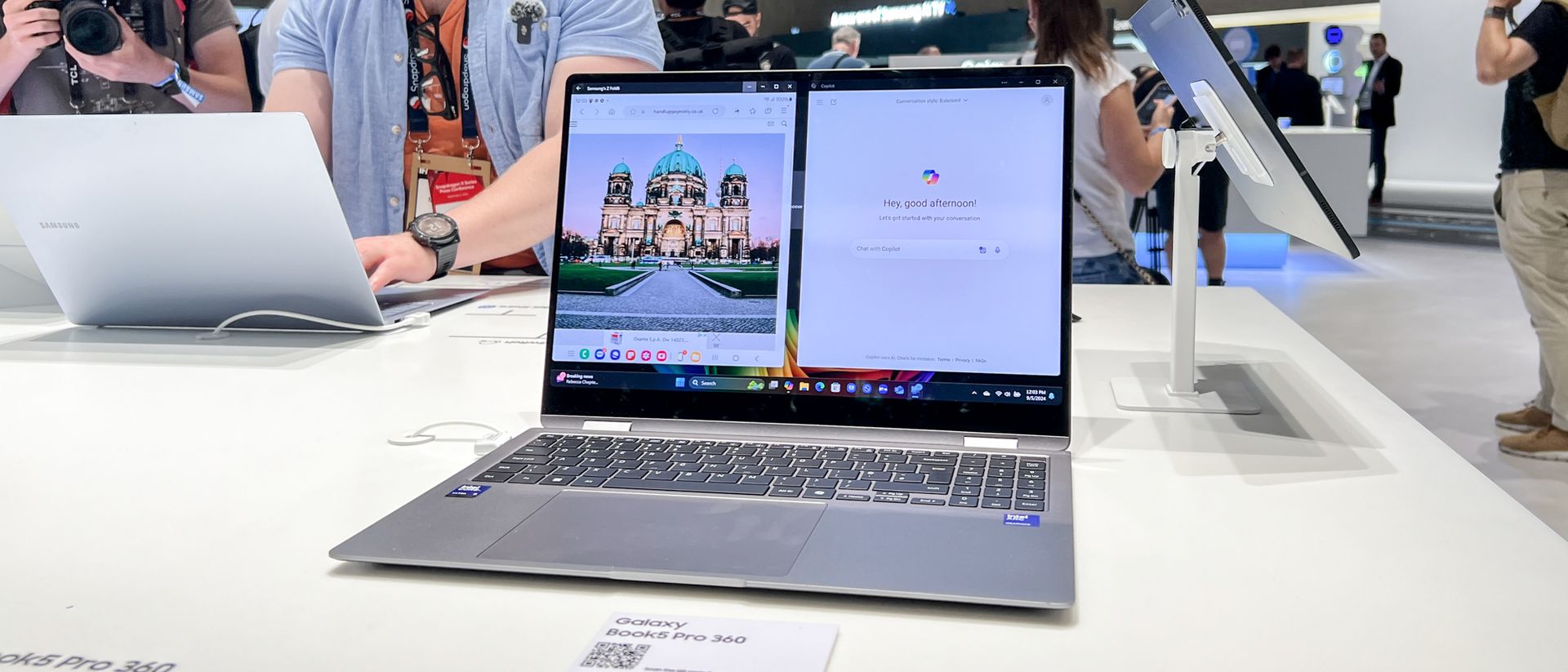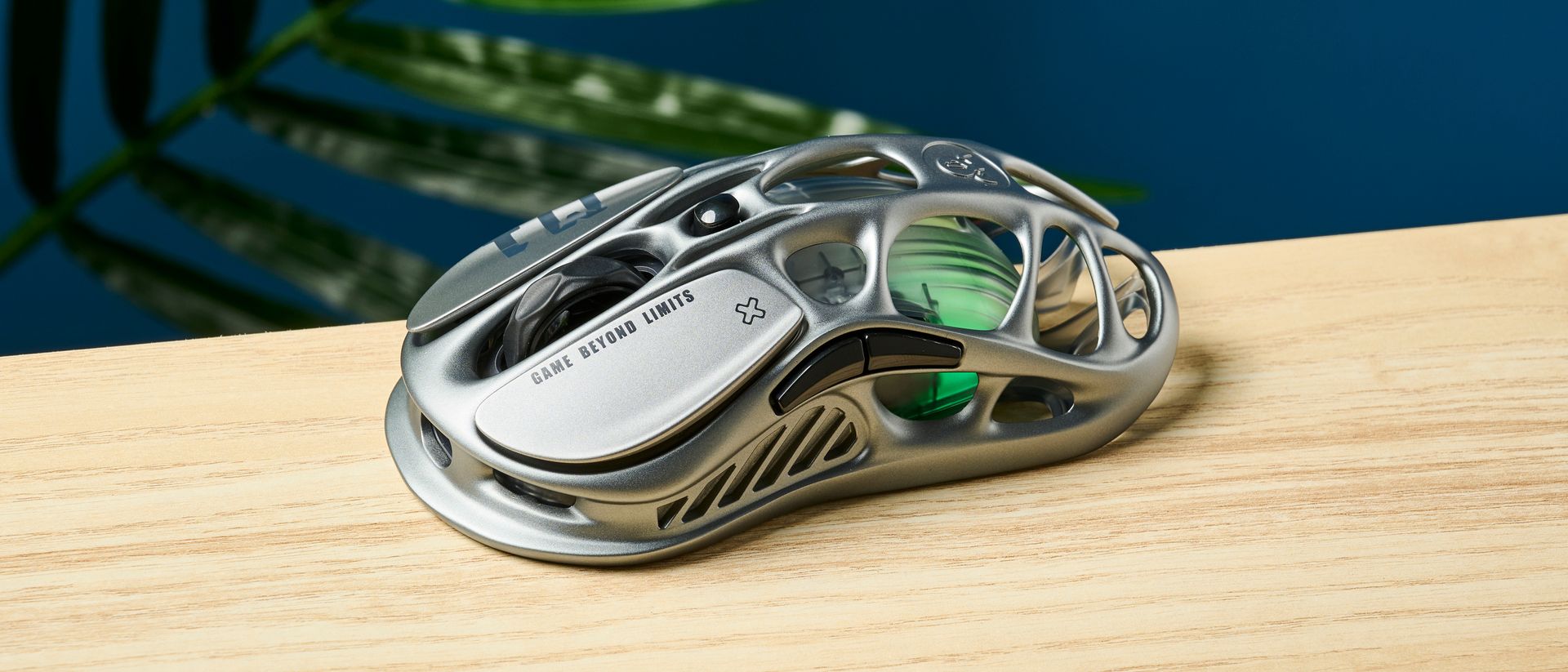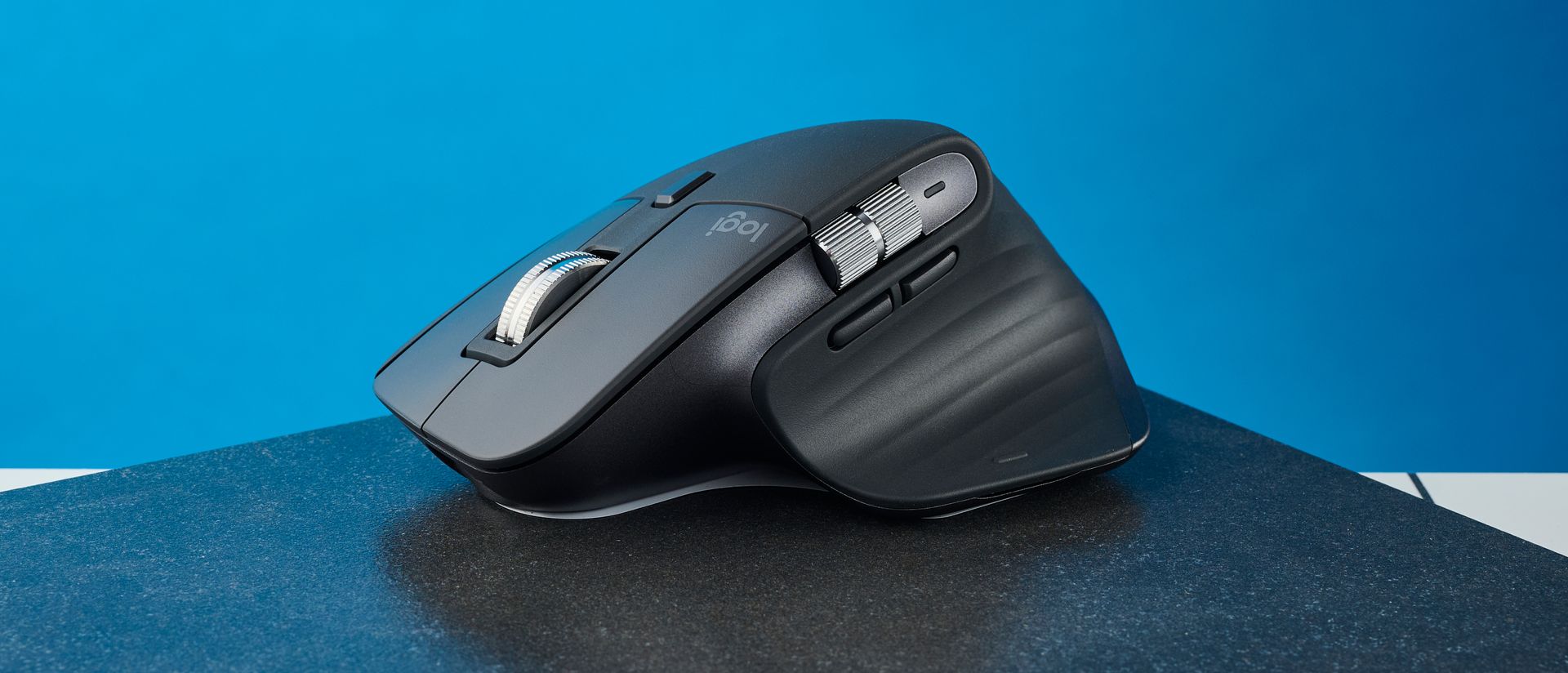Trade in HP ZBook Firefly 14″ (G10)
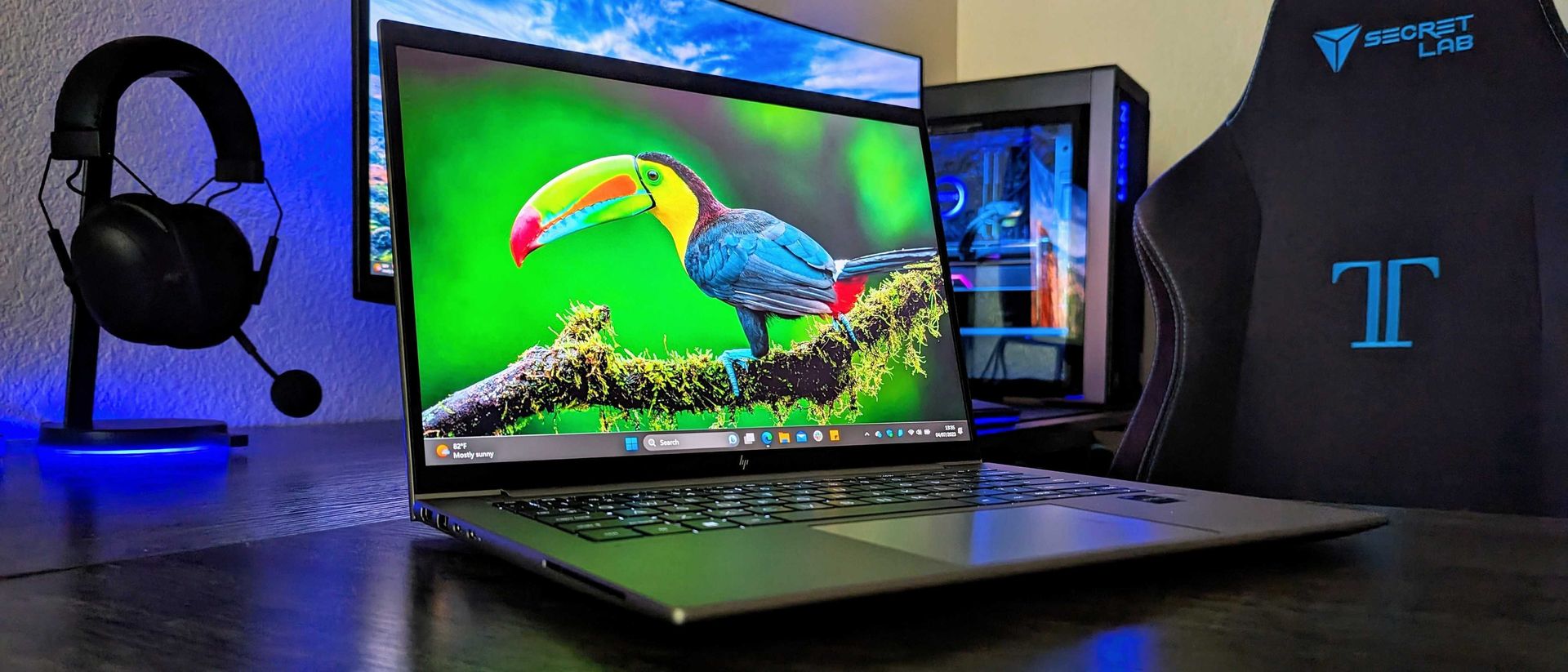
(Image credit: Windows Central | Zachary Boddy)
Catering to the needs of on-the-go professionals requiring substantial power, advanced security, and enterprise-grade features, HP’s ZBook line stands as a reliable choice. Positioned as a more potent counterpart to the popular EliteBook series, ZBooks integrate discrete graphics while maintaining portability. The Firefly 14″ G10 represents the latest and most advanced iteration of HP’s thinnest and lightest ZBook, offering impressive performance.
Despite its less-than-stellar aesthetics and some compromises in build quality such as flexing, creaks, and seams, the ZBook Firefly 14″ G10 is a powerhouse of reliability and comfort. Surprisingly enjoyable to use, it defies initial judgments based on looks. With the flexibility to configure the laptop extensively through HP, often accompanied by significant discounts, the ZBook Firefly 14″ G10 emerges as an outstanding choice for mobile professionals seeking a robust computing solution.
We are Tradelectronics, licensed second-hand electronics dealer located in Sydney CBD, experts in trading used laptops, old cameras & lens, and used mobile phones. Fast, Reliable & We Pay More! Get a free quote on your favourite WhatsApp, Facebook, SMS & Email, instant reply!
| Click icon for WhatsApp Quote | Click icon for facebook Quote |
 |
 |
- We are open from Mon – Sat 12pm – 7pm
- Get your free quote from WhatsApp and Messenger are highly recommended, we can guide you through in finding the accurate specs for your laptops, cameras & lens, mobile phones as well. As such we can provide a more precise quote for you.
ZBOOK FIREFLY 14″ G10: SPECS, BUILD QUALITY AND DESIGN
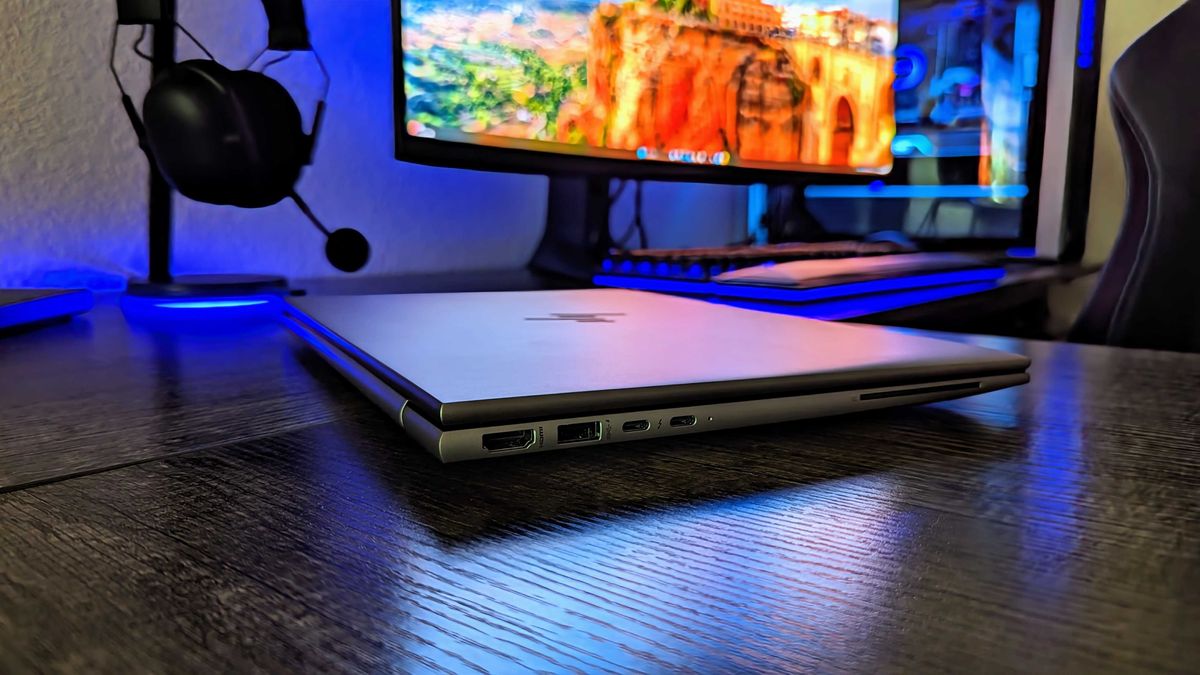
(Image credit: Windows Central | Zachary Boddy)
HP doesn’t market the ZBook Firefly 14″ as the epitome of premium build or design, and rightfully so, as its focus lies on delivering high functionality and a wealth of features. The laptop boasts an all-aluminum chassis, with a significant emphasis on sustainability by incorporating recycled materials. Specifically, the aluminum shell comprises 50% recycled content, while the bezel incorporates 75% post-consumer recycled plastic. Notably, the keycaps are crafted from 50% post-consumer recycled DVDs and CDs, and even the speaker enclosure incorporates 5% ocean-bound plastic.
In a commitment to eco-friendly practices, the packaging is entirely sustainable, with minimal plastic usage. This approach aligns with a preference for environmentally conscious choices, reflecting a commendable commitment to responsible manufacturing.
In terms of aesthetics, the ZBook Firefly 14″ may not captivate attention. Despite its slim profile (just under 20mm) and lightweight design (starting at 3.2 lbs or 1.45kg), its combination of squared corners and rounded sides contributes to a generic appearance that may give the impression of bulkiness. The use of a plastic bezel, while practical for a non-touch laptop intended for durability, doesn’t contribute to an aesthetically pleasing design.
Beyond appearances, the structural integrity is a key consideration. The ZBook Firefly 14″ exhibits notable flex in its panels, accompanied by creaking sounds and visible seams. Applying pressure in the natural grip areas, particularly where the lid closes at the center, results in concerning snapping sounds. The laptop cover, keyboard deck, and bottom vent demonstrate noticeable flexibility. Additionally, the bottom panel lacks a seamless integration into the aluminum chassis, leading to a sharp lip along the bottom edge, especially pronounced at the squared corners.
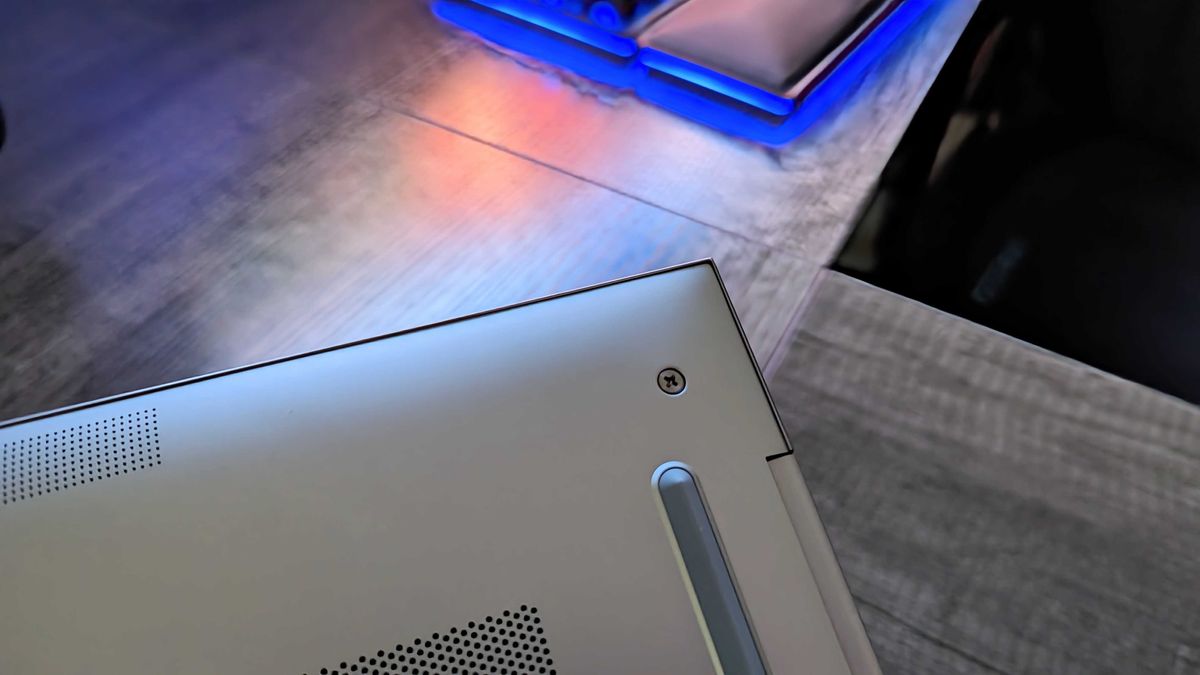
(Image credit: Windows Central | Zachary Boddy)
While the HP ZBook Firefly 14″ may not exude a premium look or feel, especially considering its price, its primary focus is on durability. Undergoing 19 MIL-STD 810H durability tests and enduring over 120,000 hours of testing in HP’s labs, this laptop is engineered for resilience. The hinge is exceptionally robust, allowing for smooth one-handed opening, and the spill-resistant keyboard adds a layer of protection against the rigors of daily use and travel. Despite the mismatch between its fit and finish and the associated price, the laptop’s durability remains a reassuring aspect, supported by features such as the easily removable bottom panel for accessing swappable storage and memory. This incongruity in aesthetics does not impede the laptop’s usability in my experience.
Specifications and features
The compact size of this laptop doesn’t compromise on connectivity, boasting a commendable array of ports, including an optional SmartCard reader for added versatility. Positioned on the left side is an older Type-A 5Gbps port, a full-sized HDMI 2.0b, and two Type-C ports with Thunderbolt 4 functionality, also serving as charging ports. On the right side, there’s a headphone/microphone combo and an additional Type-A 5Gbps port.
For enhanced connectivity on the go, select configurations offer the optional Intel 5000 5G Solution WWAN Broadband Wireless, allowing users to stay connected without relying on Wi-Fi.
The top features a 5MP full HD webcam, optionally equipped with IR sensors for Windows Hello, while a fingerprint sensor can be found on the keyboard deck in the bottom right. To ensure optimal performance, a vent on the bottom draws in cool air, while a discreet vent on the rear, behind the hinge, expels hot air. The laptop’s configurator offers a comprehensive range of features, leaving no essential element overlooked. While certain combinations may necessitate compromises (e.g., more powerful Intel P-series processors not pairing with NVIDIA’s A500 GPU), the extensive customization options ensure users can tailor the laptop to their specific needs.
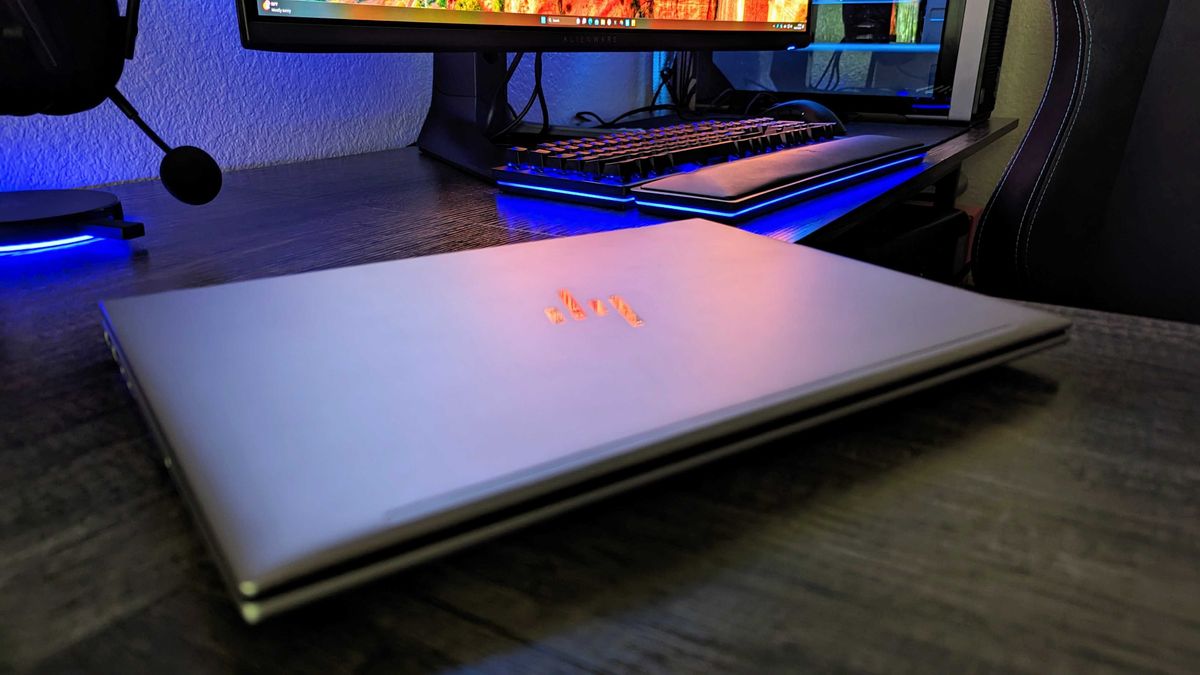
(Image credit: Windows Central | Zachary Boddy)
Regarding pricing and availability, HP provides an extensive array of configuration options through its website, allowing users to customize nearly every aspect of the laptop. The option to swap out the Intel CPU for an AMD alternative exists, though it comes with the trade-off of relying on AMD’s integrated graphics instead of NVIDIA’s A500. While HP lists a starting price of over $2,000, it’s noteworthy that configurations are often heavily discounted, frequently exceeding 50%. The configuration provided for review, originally quoted at nearly $4,000, is presently available for less than $1,800.
At the full retail price, recommending this laptop becomes challenging, even for enterprise use. However, it appears that HP intentionally set a high initial price to leverage significant discounts, making the laptop more compelling at the reduced rates. For users acquiring this laptop for work purposes without the need for Intel vPro (confirming this detail is advisable before purchase), significant cost savings can be achieved, presenting an attractive opportunity.
ZBOOK FIREFLY 14″ G10: DISPLAY
The HP ZBook Firefly 14″ offers a plethora of display options tailored to different price points and usage scenarios. Whether you require a touch screen or can forego high resolution and maximum brightness for cost savings, there’s a choice for you. In my testing, HP provided me with the most intriguing display option for this laptop: the 14-inch DreamColor IPS display. Boasting a resolution of 2560×1600, a brightness of up to 500 nits, a swift 120Hz refresh rate, and color accuracy rated at 100% of the DCI-P3 color gamut.
Beyond its impressive specifications, this display performs exceptionally in real-world usage. While my testing returned 97% of the DCI-P3 color gamut instead of the advertised 100%, the display remains sharp, color-accurate, and even surpasses HP’s brightness claims. With a maximum brightness of 542 nits, the Firefly 14″ ensures usability in bright sunlight and adjusts dimly for near-black environments. The taller 16:10 aspect ratio enhances productivity and lends a more spacious feel to the 14-inch screen.
| Setting | Brightness | Black | Contrast | White point |
|---|---|---|---|---|
| 0% | 26.5 | 0.03 | 970:1 | 6,000 (0.323, 0.318) |
| 25% | 54.1 | 0.04 | 1,320:1 | 6,000 (0.322, 0.319) |
| 50% | 129 | 0.11 | 1,170:1 | 6,100 (0.321, 0.320) |
| 75% | 285.8 | 0.25 | 1,150:1 | 6,200 (0.319, 0.320) |
| 100% | 541.8 | 0.48 | 1,130:1 | 6,400 (0.316, 0.321) |
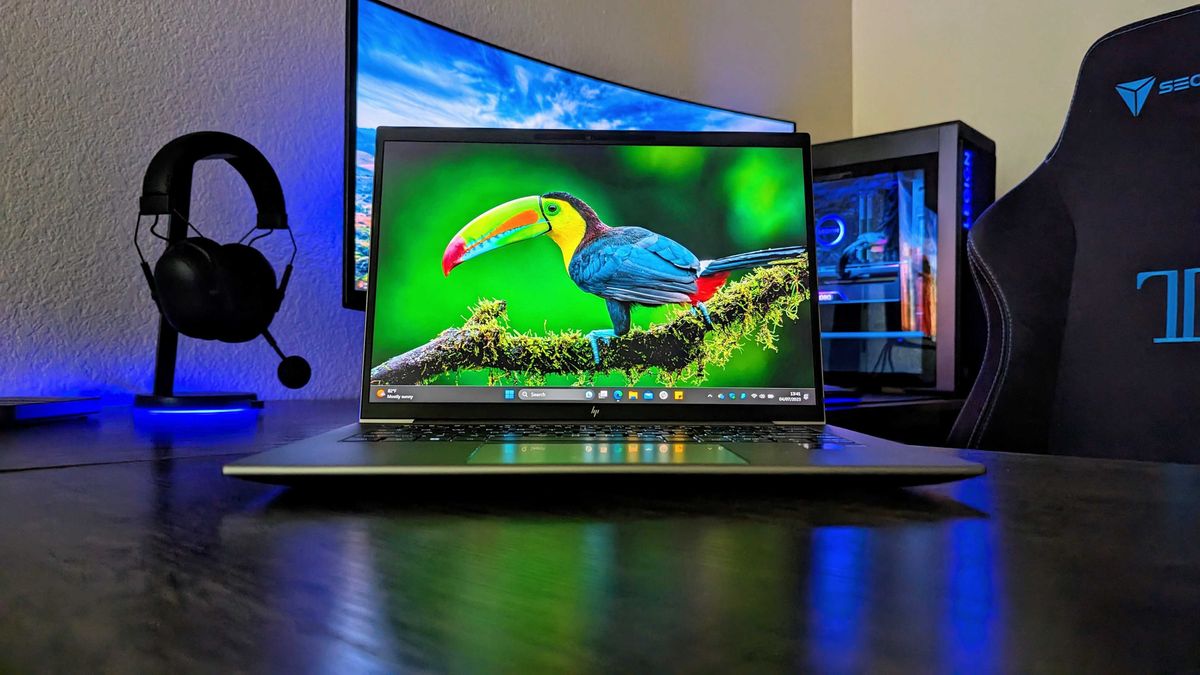
(Image credit: Windows Central | Zachary Boddy)
Honestly, there’s an indescribable charm to this display. While it may not be the most vibrant or awe-inspiring one I’ve encountered (Microsoft’s Surface displays still exude a more vivid quality), the ZBook Firefly 14″ manages to captivate with its unique combination of an anti-glare coating and a natural, well-balanced color profile. Using the laptop becomes a joy, enhanced by the adaptive refresh rate that intelligently adjusts from 60Hz to 120Hz as needed, contributing to battery conservation. HP also incorporates an adaptive color mode, fine-tuned to adapt to your surroundings, although I opted to keep this feature turned off for the majority of my review.
While I’m usually skeptical of unnecessary branding, the specific blend of features and specifications in this display for the ZBook Firefly 14″ almost justifies the DreamColor name. Staring at this display for extended periods feels remarkably comfortable, and the visual output aligns precisely with expectations. Notably, there’s minimal light bleed, and any present is soft and evenly dispersed, resulting in uniform brightness across the entire screen. It’s an unusual quality to describe a display as “comfortable,” but it genuinely holds true in this case.
Admittedly, it’s not flawless. The contrast could be improved, as the display’s contrast ratio falls within the average range for an IPS panel. Considering the price point, expectations for better-than-average performance are reasonable. Additionally, viewing angles may not be optimal, potentially influenced by the anti-glare coating on the screen. For those working with HDR content, it’s worth noting that full HDR support is lacking, limited to HDR video streaming. Despite these considerations, I find this screen to be my favorite among all the laptops I’ve encountered.
ZBOOK FIREFLY 14″ G10: PERFORMANCE
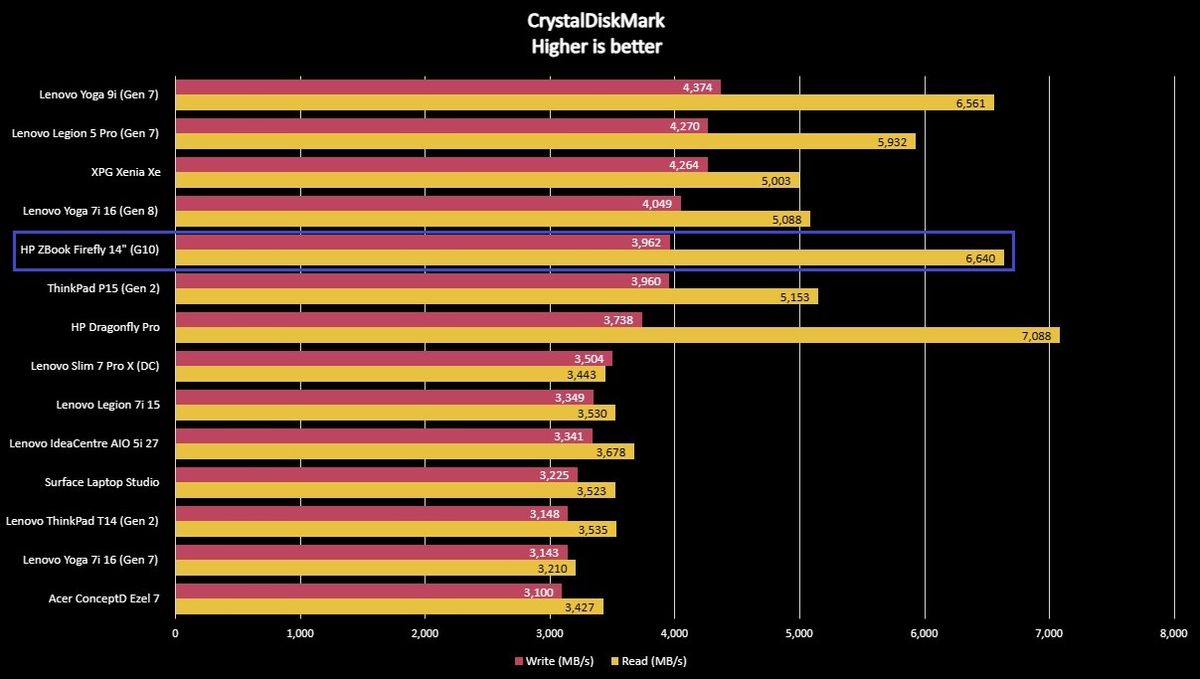
(Image credit: Windows Central | Zachary Boddy)
The primary distinction between HP’s EliteBook and ZBook enterprise laptop families lies in the availability of discrete graphics in the latter. While the ZBook Firefly 14″ isn’t a powerhouse, being the lightest and most mobile among the ZBooks at just 3.2 lbs, it offers more power than your average Ultrabook, particularly for creative workloads. Configurations for the ZBook Firefly 14″ vary, but a common setup includes an Intel 13th Gen U-series CPU and the NVIDIA RTX A500.
The RTX A500 may not be as familiar as NVIDIA’s consumer-oriented GeForce GPUs, as its focus differs. Tailored for creative work in video and photo editing, 2D and 3D modeling, AI, and similar tasks, the A500 is on par with an RTX 1650 on paper, but it doesn’t aim for gaming performance. Although superior to Intel’s integrated Iris Xe graphics, it’s crucial to understand the GPU’s design purpose.
In terms of performance, my model featured an Intel Core i7-1365U, a slightly higher-clocked variant (with Intel vPro support) of the more common i7-1355U found in many Ultrabooks. Maintaining a 15W platform with 10 cores and 12 threads, it clocks at 1.8GHz (compared to 1.7GHz) and can Turbo up to 5.2GHz (versus 5.0GHz). Additionally, the model included the NVIDIA RTX A500. Other variants of the Firefly 14″ might omit the dedicated GPU in favor of Intel’s more potent P-series processors for users prioritizing CPU performance over GPU capabilities. Notably, HP now offers the 14″ variant with AMD processors, supporting Thunderbolt 4 and possessing ISV certification, albeit without the RTX A500.
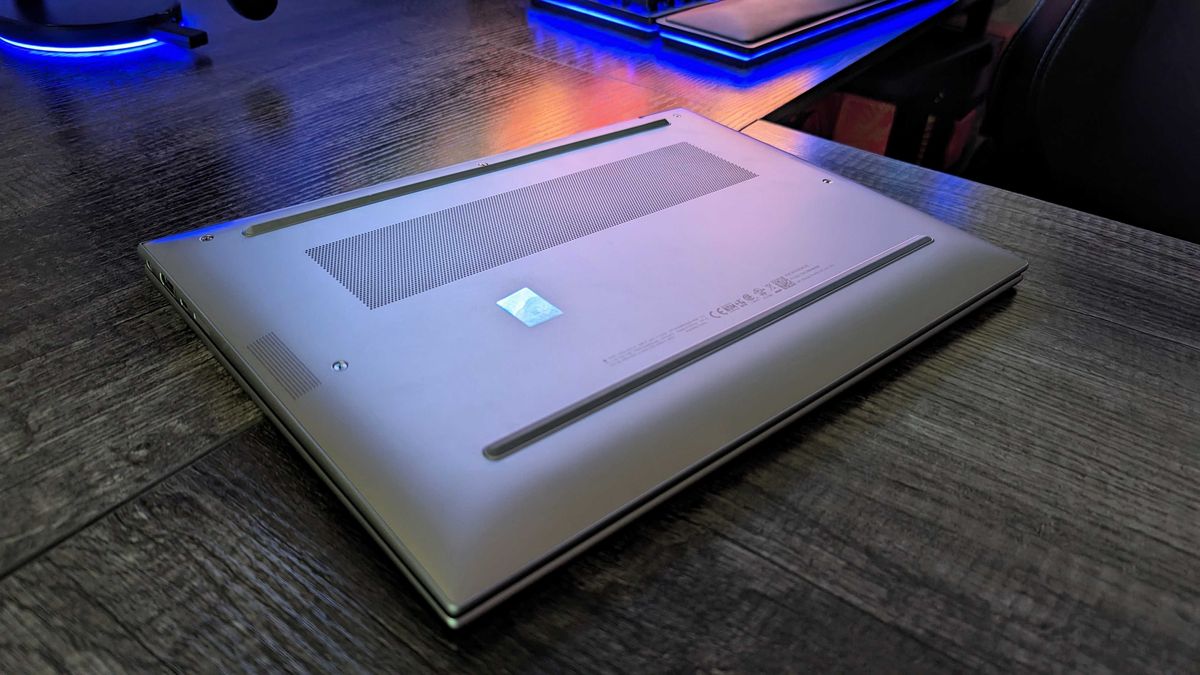
(Image credit: Windows Central | Zachary Boddy)
In benchmark testing, the HP Firefly 14″ delivered performance that aligned with expectations, presenting a few noteworthy surprises. When comparing its performance to laptops tested by Windows Central with similar or even higher multi-core capabilities, the ZBook stood out in single-core performance. For instance, in Cinebench R23, the HP Elite Dragonfly G3, equipped with a 12th Gen Intel Core i7-1265U, outperformed the ZBook in multi-core performance (6,608 vs. 6,510) but fell short in single-core performance (1,746 vs. 1,894). Despite such variations, the ZBook Firefly 14″ consistently performed well, often surpassing laptops equipped with ostensibly more powerful processors on paper, such as the 28W Intel Core i7-1360P.
In practical use, the laptop ran seamlessly without encountering stutters or issues. With 32GB of RAM, it comfortably accommodated the reviewer’s workload. HP’s claim of the device excelling in video and photo editing, 2D model work, and on-the-go viewing of 3D model files appears substantiated based on the reviewer’s experience.
The SSD in the HP Firefly 14″ boasts impressive speeds, registering 6,640 MB/s for read times and 3,992 MB/s for sequential write—among the best seen in modern SSDs, rivaling those found in high-powered gaming PCs. While the write speed falls within the average range for PCIe 4.0, it remains noteworthy and doesn’t diminish its impressive performance in practical use. Throughout various tasks, the laptop maintained a responsive performance and didn’t exhibit any slowdowns over time. It does generate some heat, particularly around the top where the laptop body meets the display, but this temperature rise never reached discomfort levels, even during lap use.
It’s crucial to reiterate that this laptop isn’t designed for gaming. HP doesn’t market it as such, and the NVIDIA A500 isn’t intended for gaming purposes. While it performs slightly better in games than Intel’s latest integrated graphics, thanks in part to its 4GB of VRAM, it’s not suitable for demanding titles like Elden Ring or Cyberpunk 2077. The laptop excels in three key areas: portability, enterprise and creative workloads, and security. All its hardware components are meticulously chosen to meet these specific focuses, contributing to its overall effectiveness in these domains.
ZBOOK FIREFLY 14″ G10: BATTERY LIFE
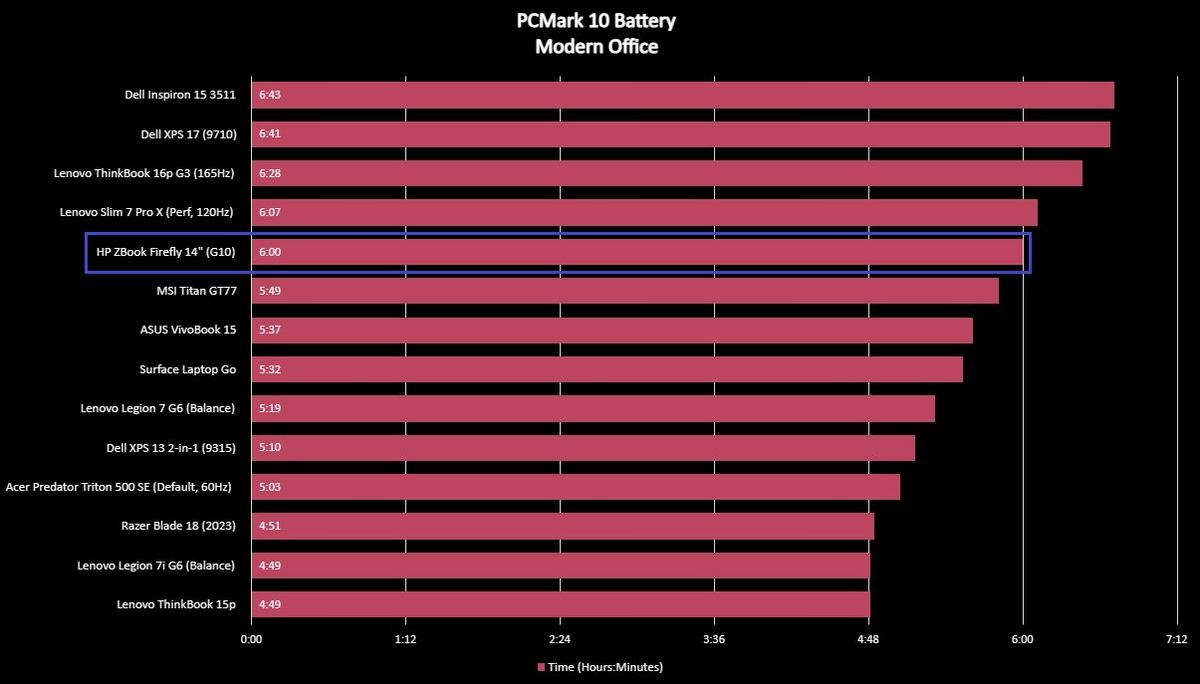
(Image credit: Windows Central | Zachary Boddy)
The HP ZBook Firefly 14″ is well-equipped for a full day of workflow with its 51Whr battery, especially considering the convenience of 65W fast charging through its two Thunderbolt 4 USB Type-C ports, allowing for quick top-ups when needed. However, it’s essential to note that this laptop incorporates a discrete GPU in the form of the NVIDIA RTX A500 professional graphics card, paired with a bright, high-resolution, high-refresh-rate display.
As a result, the ZBook Firefly 14″ surpasses the endurance of the average gaming laptop, which typically prioritizes performance over battery life. Nevertheless, it may not quite match the longevity of the longest-lasting laptops in its size class. In the PCMark 10 battery test, involving a varied workload of Microsoft Office tasks, web browsing, video conferencing, rest periods, and more, this laptop achieved precisely 6 hours of use. These results were obtained with the display set to its default adaptive 120Hz refresh rate (fluctuating between 60Hz and 120Hz as needed) and approximately 150 nits of brightness.
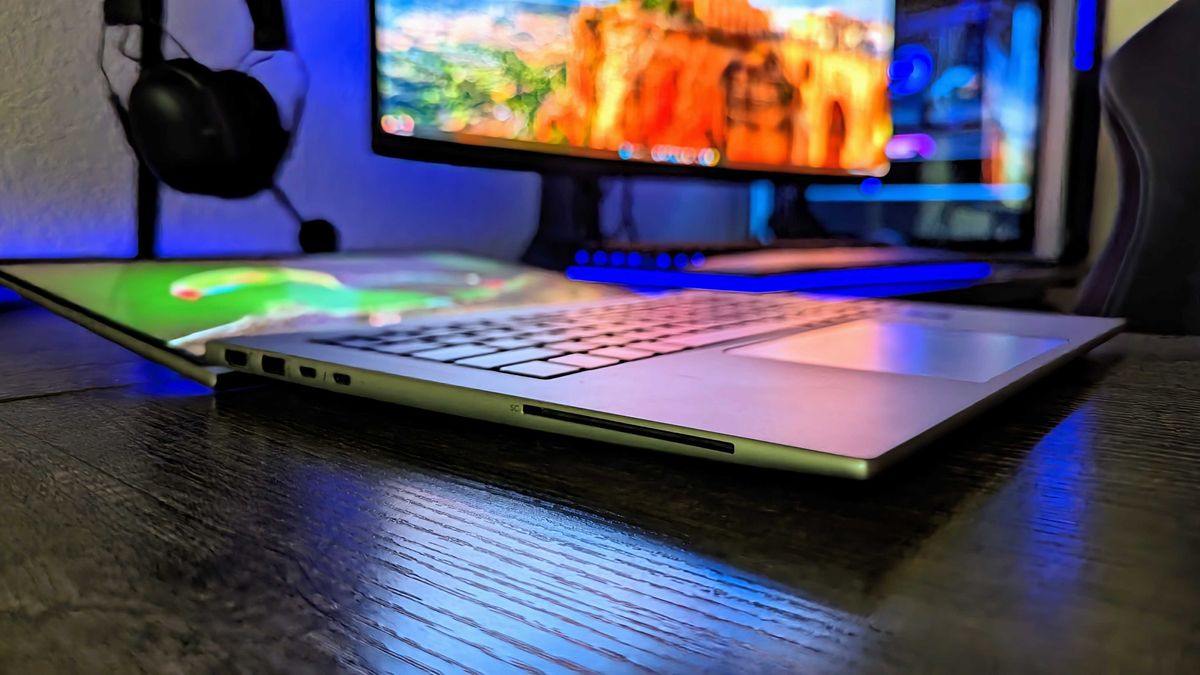
(Image credit: Windows Central | Zachary Boddy)
Your experience of approximately 6 hours aligns well with the ZBook Firefly 14″ battery life in real-world scenarios. The duration may vary with factors like increased display brightness (especially considering the impressive maximum brightness of over 500 nits) or demanding workloads such as creative tasks or light gaming. While it might not fit the “all-day” battery description as HP suggests, it remains reliable for several hours of continuous usage, making it suitable for outings without a charger.
Adjusting the display brightness to only what’s necessary can extend battery life, and switching from the default 120Hz to a traditional 60Hz refresh rate can also contribute to increased endurance, potentially adding up to 90 minutes in some cases. The ZBook Firefly 14″ exhibits decent standby life, with the Battery Report indicating an average loss of 8-9% battery life for every 16 hours in standby, translating to around 188 hours of total standby time.
When plugged in, the 65W charger efficiently charges the ZBook Firefly 14″, reaching up to 50% in just 30 minutes, according to HP (starting from 0% when the laptop is closed and asleep). While the indicator light on the side may exhibit some inconsistency, the laptop’s two Type-C ports capable of charging ensure that you can stay plugged in without sacrificing connectivity. Additionally, the slim chassis allows for convenient portability, making it feasible to carry a portable battery pack for extra power when away from an outlet.
ZBOOK FIREFLY 14″ G10: KEYBOARD AND TOUCHPAD
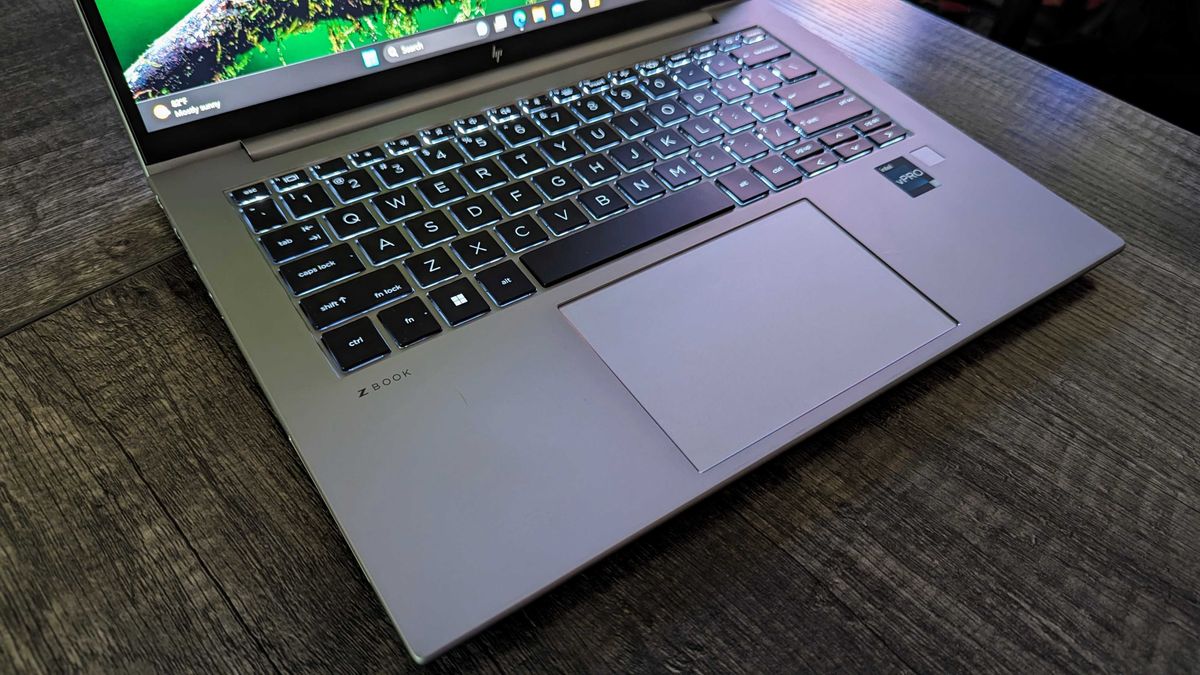
(Image credit: Windows Central | Zachary Boddy)
HP, like other major PC manufacturers, excels in crafting excellent laptop keyboards, and the ZBook Firefly 14″ is a prime example of this expertise. The keyboard is spacious, thoughtfully arranged, features a range of useful shortcuts in the function keys row, and offers a highly comfortable typing experience.
Each key delivers reliable tactile feedback, and the layout is intuitive and easy to navigate. For a 14″ laptop, this keyboard stands out as fantastic, catering precisely to the needs of professionals. While it features backlighting, it’s limited to a single stage. Additionally, HP highlights the keyboard as spill-resistant, although this claim wasn’t tested for obvious reasons.
The touchpad on the ZBook Firefly 14″, while boasting a good size and a smooth glass texture, doesn’t receive the same wholehearted commendation as the keyboard. Despite utilizing Windows Precision drivers for gesture support, two notable issues mar the touchpad experience. Firstly, there is a peculiar behavior where the touchpad “goes to sleep” after a few minutes of inactivity, requiring a touch to reawaken it. While a minor inconvenience, it is an unusual occurrence not commonly observed on other laptops, as touchpads typically respond instantly.
The second issue is a bit more troublesome. The touchpad exhibits slightly lower sensitivity than expected from a modern touchpad. This translates to jagged and erratic cursor movements when performing small, precise movements at low speeds. Although adjusting the overall cursor speed can partially alleviate the problem, it remains a source of frustration, especially during tasks requiring fine control, such as resizing windows, editing photos, or making precise edits in documents.
ZBOOK FIREFLY 14″ G10: CAMERA, AUDIO, AND MORE
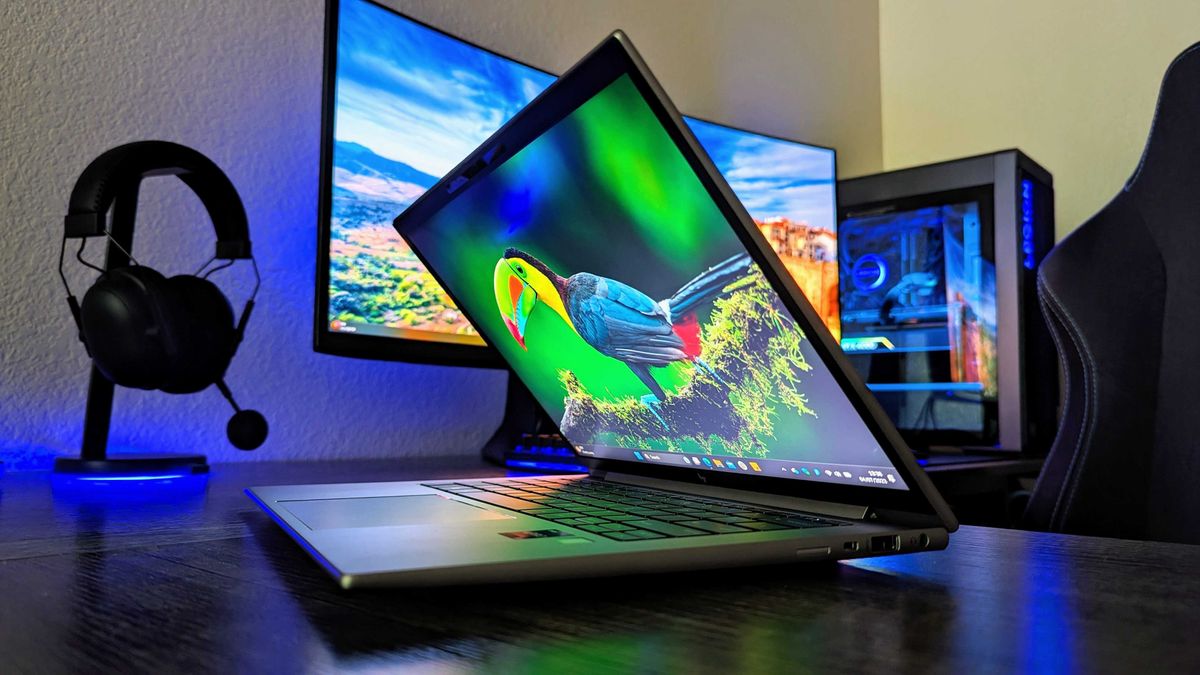
(Image credit: Windows Central | Zachary Boddy)
The HP ZBook Firefly 14″ is designed to be a versatile performer, and HP has incorporated numerous features to ensure it meets diverse needs. At the top, there’s a 5MP full HD camera, complete with a physical shutter for privacy. Additionally, users have the option to enhance the camera with IR sensors for Windows Hello facial recognition. When utilizing this feature, facial recognition is both fast and reliable for signing in.
In terms of camera performance, it falls into the realm of being okay. While it successfully captures a decent amount of detail and color, the camera struggles with dynamic range, often being overexposed by light sources such as sunlight or visible monitors in the frame. HP provides additional features to enhance the camera, including auto framing, background blurring, and more. The ability to control multiple webcams simultaneously is also a welcome feature. However, despite these enhancements, the overall performance of the webcam is considered average.
The microphones on the HP ZBook Firefly 14″ deliver a surprisingly good performance. Utilizing the classic dual-array setup, the microphones excel in capturing your voice while effectively filtering out background noise. Colleagues at Windows Central reported that your voice sounded very natural and clear, and even when external factors like lawn work made it challenging for you to hear yourself, they couldn’t detect it at all. While it may not rival dedicated microphones or top-tier headset mics like those on the Razer BlackShark V2 Pro (2023), it stands out as excellent for a laptop.
Audio output is delivered through dual bottom-firing speakers, tuned by Bang & Olufsen, a common feature in HP laptops. These speakers achieve notable volume levels and maintain decent sound quality even at higher volumes. However, they understandably lack in bass, and at high volumes, the sound can verge on being tinny with highs. For tasks like video conferences, video playback, or casual music listening, they perform well. It’s worth noting that placing the laptop on a soft surface, such as your lap or a couch, can easily muffle the speakers and significantly reduce their output.
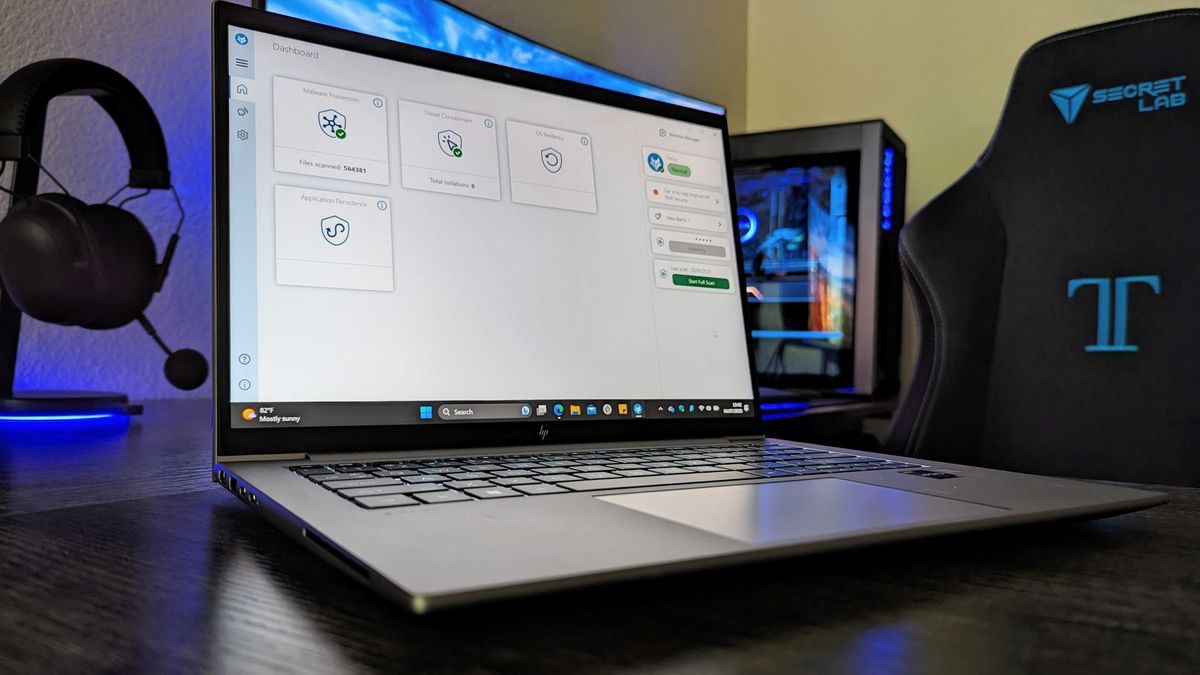
(Image credit: Windows Central | Zachary Boddy)
On the software front, the HP ZBook Firefly 14″ comes with Windows 11 Pro instead of Home, providing additional security and remote management features. HP includes a plethora of pre-installed apps and software on this laptop, totaling 19 programs, with the majority originating from HP. Additionally, there are typical apps from Intel and NVIDIA for viewing hardware information and updating drivers. However, there is an annoying web link for Adobe offers and Spotify.
While the abundance of pre-installed apps might seem excessive, it can be forgiven considering the extra functionality and security features integrated into HP’s EliteBook and ZBook enterprise-grade laptops. Some of these functions could potentially be consolidated for a cleaner apps list, especially through the creation of a hub-like app such as the myHP app.
Many additional features cater to enterprise work, particularly in the realms of management and security. HP’s Wolf Security platform collaborates with Windows Defender and the laptop’s physical hardware features to ensure security. Controls and additional features cover aspects such as webcam management, audio settings, battery and charging management, and more. While not all users may need these features, they form a significant aspect of HP’s EliteBook and ZBook lines. Moreover, all models are ISV certified, guaranteeing compatibility with a wide range of important and popular enterprise applications and software.
ZBOOK FIREFLY 14″ G10: COMPETITION
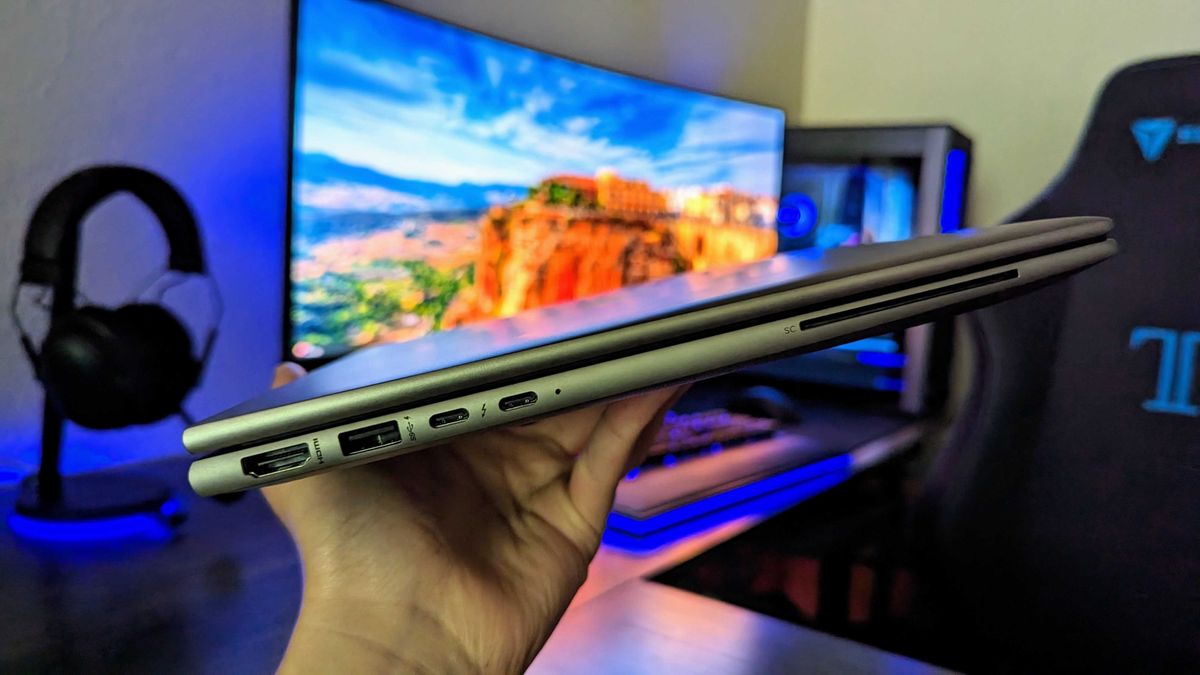
(Image credit: Windows Central | Zachary Boddy)
The HP ZBook Firefly 14″ is positioned as a thin and light laptop that can be compared to premium ultrabooks. However, it faces stiff competition from various 14-inch ultrabooks on the market, each excelling in different aspects such as design, build quality, value, and battery life. Notable alternatives include:
- Lenovo Yoga 9i 14: A favorite among Windows laptops, especially for those looking for a convertible with a touchscreen.
- HP Elite Dragonfly: Offers Intel vPro support in a convertible design, showcasing HP’s commitment to premium business laptops.
- Dell XPS 13 Plus: A traditional clamshell design with an impressive build and design.
While these alternatives might outperform the HP ZBook Firefly 14″ in certain aspects, they lack a discrete NVIDIA GPU. The Firefly 14″ stands out as a unique option, particularly for users who prioritize enterprise features like additional security and management functionalities.
For users specifically seeking enterprise-focused laptops, competitors like Lenovo’s ThinkBooks and ThinkPads or Dell’s Precision lineup could be viable options:
- Lenovo ThinkPad P14s Gen 3: Offers a 14-inch display with various resolution options and a range of Intel vPro processors.
- Dell Precision 5480: Part of Dell’s Precision laptop line, providing workstation capabilities in a 14-inch chassis.
It’s worth noting that the larger sibling, the ZBook Firefly 16″, offers the same internals and features as the 14″ model but with a larger screen, bigger battery, and potentially better thermal performance. The 16″ version also introduces an OLED display option for users who prefer more screen real estate. Keep in mind that while the 14″ variant features AMD options, the 16″ version might not have the same availability.
ZBOOK FIREFLY 14″ G10: SHOULD YOU BUY IT?
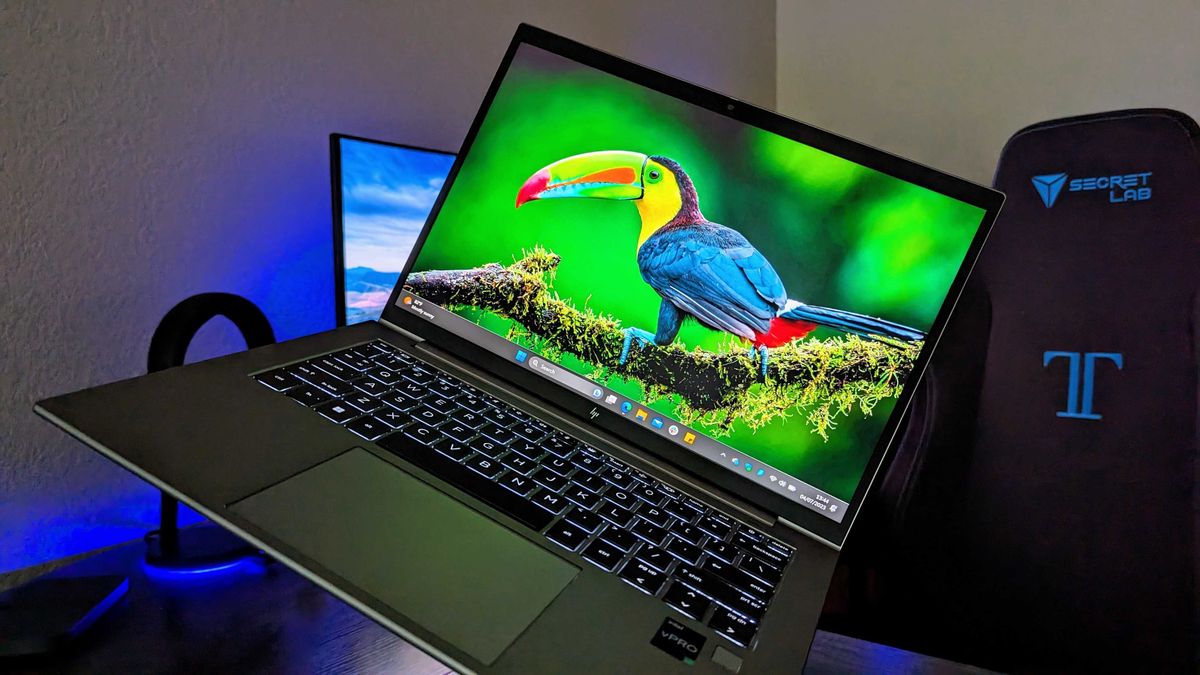
(Image credit: Windows Central | Zachary Boddy)
You should buy this if …
- You need a compact, enterprise-ready laptop with extra security and management features.
- You need a creative-focused NVIDIA GPU in a smaller laptop.
- You want an ultraportable laptop that can still handle your entire workflow.
You should not buy this if …
- You don’t need the extra, enterprise-focused features.
- You want a compact laptop for gaming.
- You care a lot about the look and feel of your laptop.
The HP ZBook Firefly 14″ may not be the ideal choice for most users, as its power, security features, and remote management capabilities cater to a niche audience. Those seeking a laptop with less power, a more premium or versatile design, and a convertible form factor might find better options elsewhere. However, for individuals requiring robust features and capabilities, the HP ZBook Firefly 14″ stands out as a commendable choice.
While the laptop may not boast the most attractive design, the concerns lie more with issues like flexing, creaks, and sharp seams. The touchpad’s low sensitivity and tendency to go to sleep can also be considered drawbacks. Additionally, the battery life, while consistent, doesn’t reach exceptional levels.
Nevertheless, overlooking these weaknesses reveals a highly portable, compact, and enterprise-ready laptop with substantial power and customization options through HP’s configurator. The HP ZBook Firefly 14″ (G10) defies initial impressions, concealing a joyous day-to-day computing experience. Its flawless performance, comfortable keyboard, and incredible screen contribute to an overall positive user experience. While not everyone may require the extra features packed into this laptop, those who do will likely find satisfaction in what HP has crafted.
Source: Windows Central

